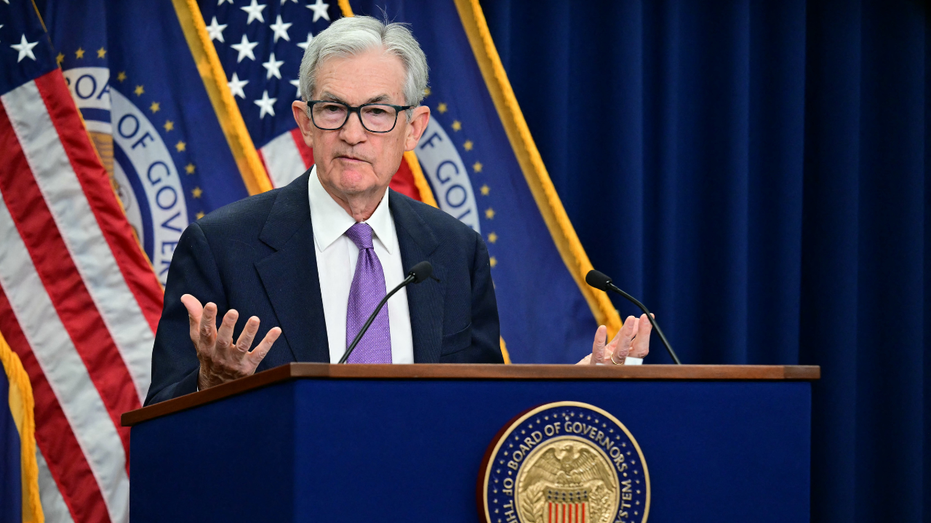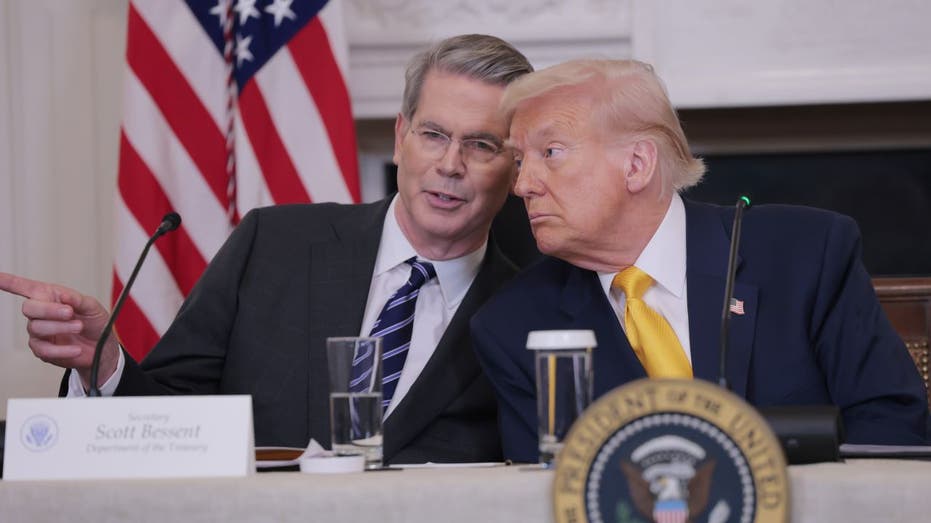Investors are plowing money into a broad swath of assets putting the ETF industry in the driver’s seat of what may be another record year.
Almost everything has lined up for bonds lately.
The Federal Reserve has been cutting interest rates. Jobs growth and consumer spending are slowing, keeping hopes for further cuts alive, but not pointing to an imminent recession that would threaten corporate balance sheets. Inflation pressure has continued to moderate, despite fears that President Trump’s tariffs will drive prices higher.
The widely tracked Bloomberg U.S. Aggregate Bond Index has returned around 6.7% in 2025, accounting for price changes and interest payments. That puts it on pace for the best year since 2020.
Bonds had regained ground after the Fed’s inflation-fighting campaign fueled a historically bad 2022. The Bloomberg Agg—made up largely of Treasurys, investment-grade corporate bonds and agency mortgage-backed securities—returned 5.5% in 2023, though it almost stalled in 2024.
| Ticker | Security | Last | Change | Change % |
|---|---|---|---|---|
| BND | VANGUARD TOTAL BOND MARKET ETF – USD | 74.26 | +0.06 | +0.08% |
| AGG | ISHARES CORE U.S. AGGREGATE BOND ETF – USD DIS | 100.09 | +0.06 | +0.06% |
| BNDX | VANGUARD TOTAL INTERNATIONAL BOND INDEX FUND ETF – USD DIS | 49.50 | 0.00 | 0.00% |
| SGOV | ISHARES TRUST ISHARES 0-3 MONTH TREASURY | 100.54 | 0.00 | 0.00% |
Investors said 2025 feels different. The climb has rewarded investors still stinging from the unusual volatility that followed the Covid-19-era inflation surge. Unlike in the previous few years, the index’s returns have easily outpaced those of short-term T-bills—the other main choice for investors seeking a safe alternative to stocks.
“It’s certainly been more fun to go to client meetings this year as a bond manager,” said Cal Spranger, a fixed-income manager at Badgley Phelps Wealth Managers. “A few years ago, I wasn’t getting invited to any.”
While yields on government and corporate bonds have gradually come down, they are still far above the paltry levels seen during much of the past decade—and investors want to lock them in while they can.
U.S. DEBT CHECKER: HERE’S WHAT YOU OWE
At times earlier this year, brief but sharp selloffs in U.S. Treasurys sparked alarm that the bond market might finally be buckling under the pressure of outsize U.S. borrowing. The size of the budget deficit can influence yields because a larger deficit means the government needs to borrow more by issuing Treasurys, and, in turn, attract demand for that debt with higher rates.

U.S. Federal Reserve Chair Jerome Powell speaks during a press conference at the end of a Monetary Policy Committee meeting in Washington on October 29, 2025. (Jim Watson/AFP/Getty Images / Getty Images)
Falling rates have largely overwhelmed all of those concerns because bonds issued when rates are high become more valuable when they are expected to decrease. At the start of the year, investors were unsure if the Fed would be able to cut rates given persistent inflation and expectations Trump would pursue expansive fiscal policies. But a cooling labor market has already resulted in two cuts this year, with another reduction still possible.
BILL ACKMAN’S PLAN TO REMAKE FANNIE MAE AND FREDDIE MAC
Treasury yields, which fall when bond prices rise, have decreased as a result. The yield on the 10-year note has slid by nearly a half-percentage point this year, settling Friday at 4.147%.

U.S. Secretary of Treasury Scott Bessent and U.S. President Donald Trump look on during The White House Digital Assets Summit in the State Dining Room of the White House on March 07, 2025 in Washington, DC. (Anna Moneymaker/Getty Images / Getty Images)
Also aiding bonds: The Trump administration has kept close tabs on the market, at times swooping in during turbulent periods. The president paused the bulk of his so-called reciprocal tariffs in April because of “yippy” bond investors. Treasury Secretary Scott Bessent has said that keeping yields low on longer-term Treasurys was a priority for the administration. They act as a benchmark for borrowing costs for everything from mortgages to student loans.
HIDDEN COSTS OF HOME OWNERSHIP
There are still plenty of threats to the rally. The path for interest-rate cuts has been muddied by a split between central bank officials, with some throwing cold water on the likelihood of a December rate cut. Federal Reserve Chair Jerome Powell warned in October that the Fed is “far” from decided on lowering rates next month, an unusually blunt remark from a central banker.
Investors now believe a December rate cut is roughly a coin flip. Futures markets on Friday were pricing in a roughly 46% chance of a cut, according to CME Group data, down from about 67% a week earlier.
Some fret that the U.S. credit market is running hot and that historically high valuations for corporate debt are masking excesses in the market and insufficiently compensating investors for taking risks. The additional yield, or spread, that investors get for holding investment-grade corporate bonds over Treasurys fell to 0.72 percentage point in September, the lowest level since the late 1990s. It has since ticked up modestly to 0.83 percentage point.
FED CUTS RATES FOR SECOND TIME THIS YEAR
Some analysts warn that the U.S. government’s budget deficit is likely to weigh on the bond market again. The deficit came in at $1.8 trillion for the 2025 fiscal year, virtually unchanged from 2024.
“It certainly will be a problem at some point,” said Mike Goosay, chief investment officer and global head of fixed income at Principal Asset Management. “You can only borrow so much before investors start to move away from you.”
Many see the good times continuing, believing that interest rates still have farther to fall despite the recent uptick in uncertainty.
Matt Brill, a senior portfolio manager and head of North American investment-grade credit at Invesco, said his team favors short-term bonds on a belief that coming economic data will push the Fed to continue cutting.
CLICK HERE TO READ MORE ON FOX BUSINESS
“You’re not getting a lot of layoffs, but you’re also not getting jobs being created,” he said. “I think the Fed is looking at that, and it’s concerning to them.”
Write to Krystal Hur at krystal.hur@wsj.com and Sam Goldfarb at sam.goldfarb@wsj.com
#Bonds #surge #pace #year #bond #rally